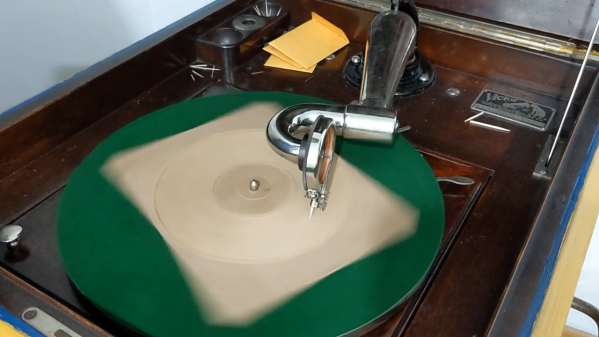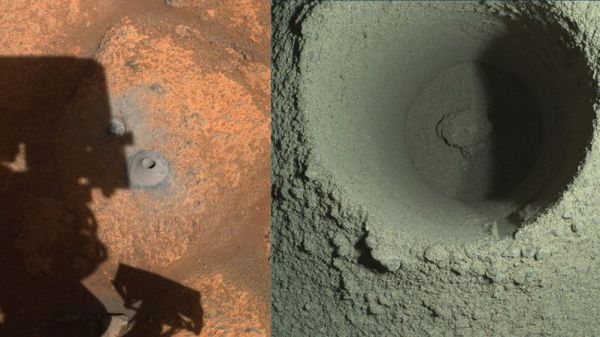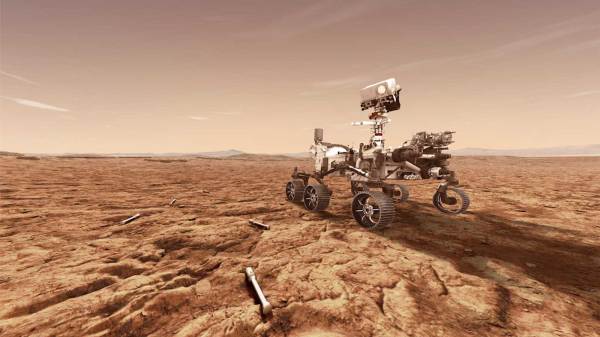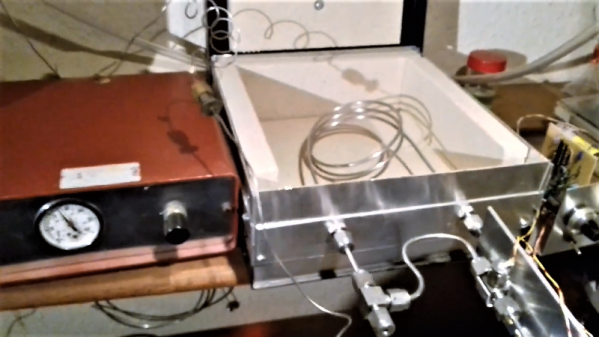Say what you will about [Thomas Edison], but it’s hard to deny the genius of his self-proclaimed personal favorite invention: the phonograph. Capturing sound as physical patterns on a malleable medium was truly revolutionary, and the basic technology that served as the primary medium of recorded sound for more than a century and built several major industries is still alive and kicking today.
With so much technological history behind it, what’s the aspiring inventor to do when the urge to spin your own phonograph records strikes? Easy — cut them from wood with a CNC router. At least that’s how [alnwlsn] rolled after the “one-percent inspiration” hit him while cutting a PCB with his router. Reasoning that the tracks on the copper were probably about as fine as the groove on a record, he came up with some math to describe a fine-pitch spiral groove and overlay data from a sound file, and turn the whole thing into G-code.
For a suitable medium, he turned to the MDF spoil board used to ship PCB stencils, which after about three hours of milling resulted in a rather hairy-looking 78-RPM record. Surprisingly, the record worked fairly well on a wind-up Victrola. The spring-powered motor was a little weak for the heavy wooden record and needed a manual assist, but you can more or less clearly hear the 40-second recording. Even more surprising was how much better the recording sounded when the steel needle was replaced with a chunk of toothpick. You can check out the whole thing in the video below, and you’ll find the G-code generation scripts over on GitHub.
Is all this talk about reproducing music using wiggly lines confusing you? Woah, there, whippersnapper — check out [Jenny]’s primer for the MP3 generation for the background you need.
Continue reading “Wooden You Like To Hear A CNC-Cut Phonograph Record?”







![Image is © aliceazzo [http://aliceazzo.deviantart.com/].](https://hackaday.com/wp-content/uploads/2014/10/9132521412537668507.jpg?w=300)










